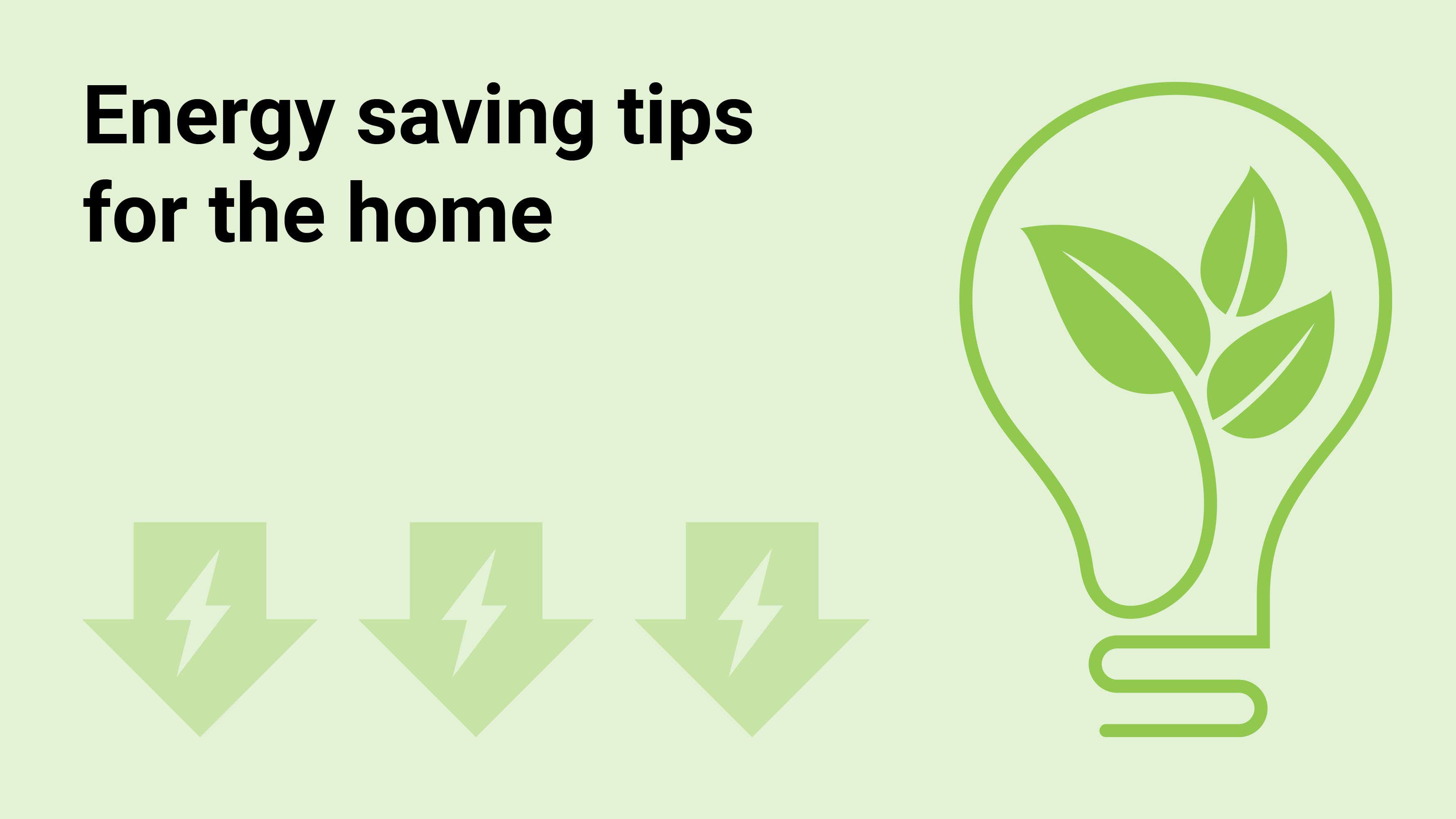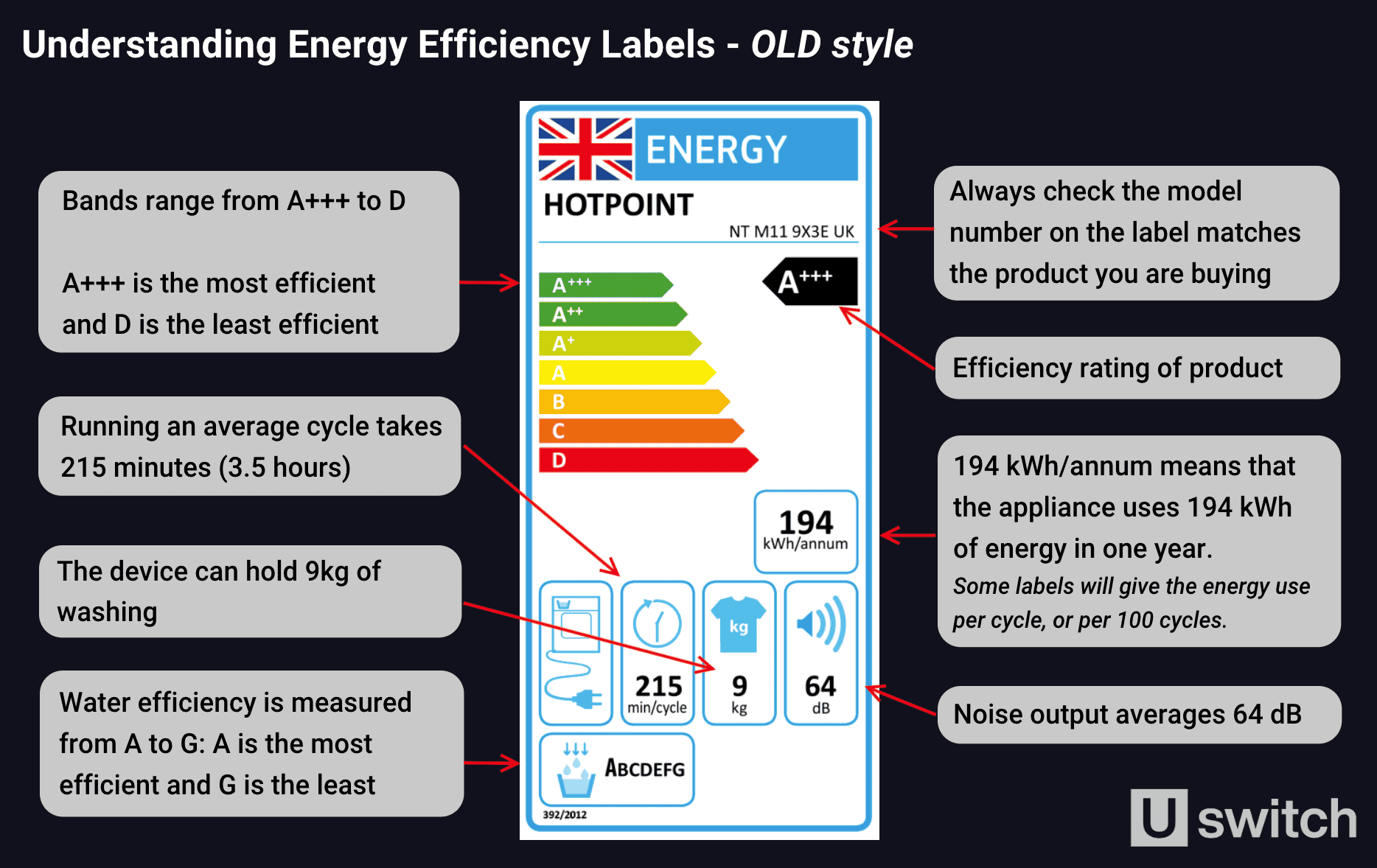- Uswitch.com>
- Gas and Electricity>
- Guides>
- Energy efficiency labels explained - Uswitch
Energy efficiency labels explained
What is an energy efficiency label?
When investing in a new fridge, washing machine, TV or dishwasher, it’s more important than ever to look at the energy efficiency label. These were introduced by the EU in 1995 to provide customers with more information about the machines they were considering purchasing, and to stimulate competition and innovation between manufacturers. Previously, the scale ran from A (most efficient) to G (least efficient), and then extra “A” ratings were added to reward the best appliances: A+, A++ and A+++.
In March 2021, though, these extra ratings were scrapped and the system now runs from A to G, as it originally did. However, the ‘A’ rating is reserved, so a product may go from being ‘A+++’ rated under the previous system down to a B, C or even a D in the new system.
However, some shops are still selling appliances with labels showing the old rating system, which can be confusing for customers unsure what they should be looking for. While it’s possible to save on the initial purchase of the appliance, an inefficient appliance will then cost more to run over its lifetime.
What does the new energy efficiency label look like?
On the left, we can see the old energy efficiency label, and on the right we can see the new version, which is clearly rated “B” at the top. On the left, we can see the old rating system that runs to A+++. This is the main difference to look out for.
The kWh rating on the new label here applies to the amount of energy that will be used per 100 cycles but, depending on the appliance, it might apply to the amount of energy used per year or per 1,000 hours.
Underneath the kWh rating is an area for “extra information”. Again, this will vary depending on the type of appliance:
Dishwasher: the number of place settings, the amount of water use per wash, the duration of the wash and the noise level as it runs (rated in decibels and on a A-D rating)
Fridges: the capacity of chilled and/or frozen compartments in litres and the noise volume as it runs
Televisions: the energy rating and consumption when displaying HDR content (assuming it has this feature) and the size, height and pixel width of the screen
Washing machines and washer-dryers: the capacity, duration and water consumption of the machine’s eco program and an A-G rating of the spin dry and noise rating of the final spin.
Read more:

Which appliances use the most energy? - Uswitch
With energy prices still high, there are limited options for both saving money and limiting your impact on the environment. Previously you’d have been able to switch to a better energy deal with one of the increasing number of green energy suppliers, but this is no longer the case.
Learn more
104 energy saving tips for your home - Uswitch
With working from home the new normal and energy prices high, it's important to keep your bills as low as possible. The best ways to do that are in our guide featuring 104 energy-saving tips.
Learn more
What is an energy performance certificate? - Uswitch
An energy performance certificate is required if you are selling, renting or building in the UK. Find out how to get one, and how it can save money.
Learn more


